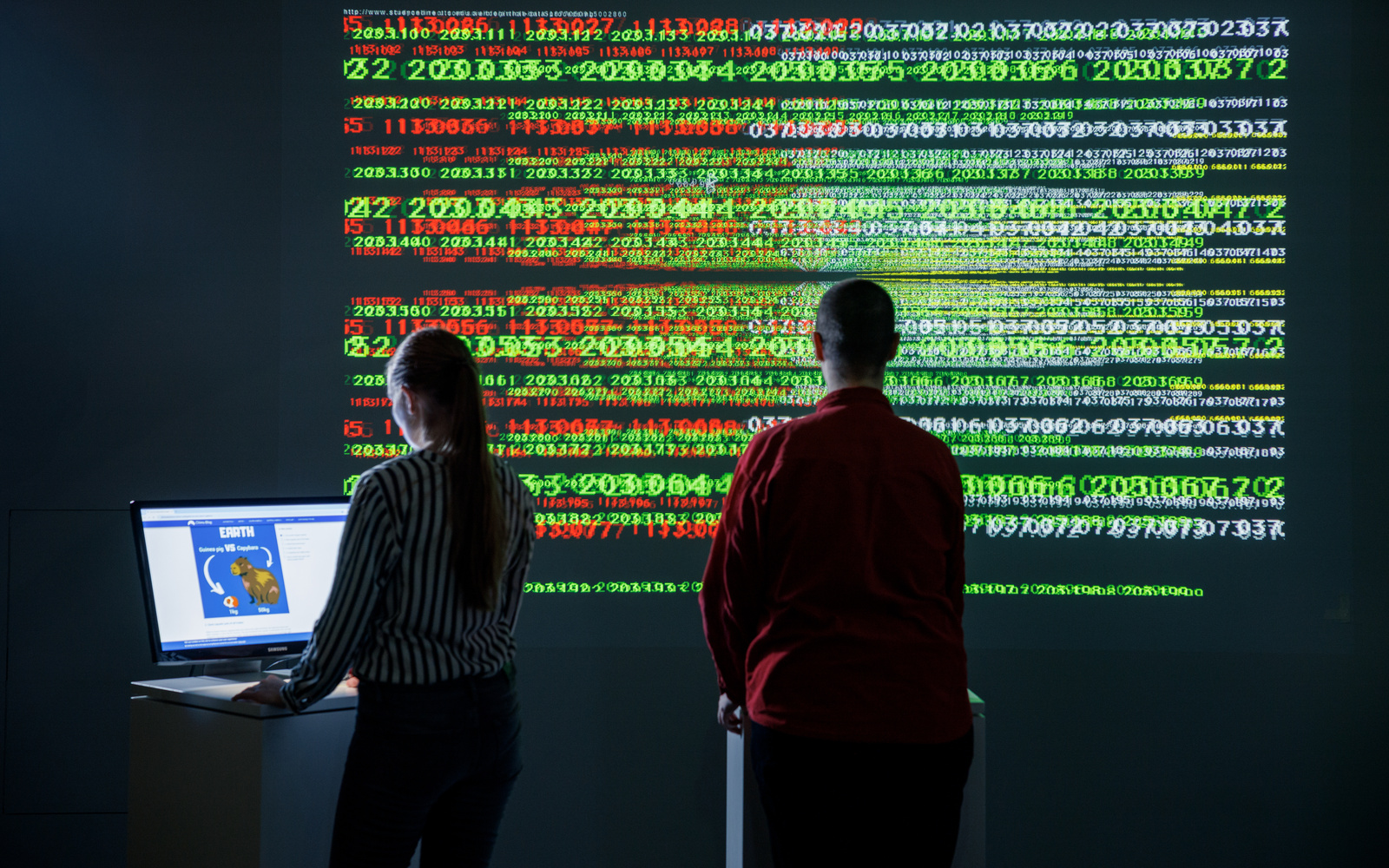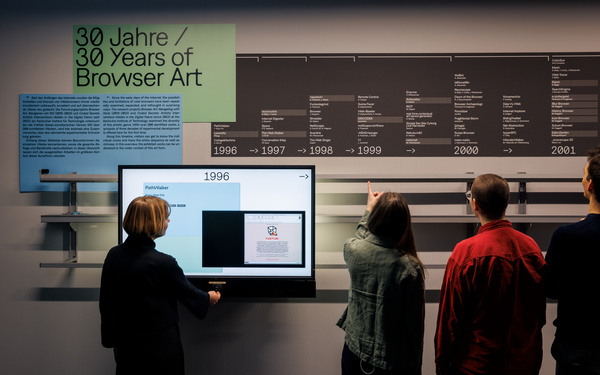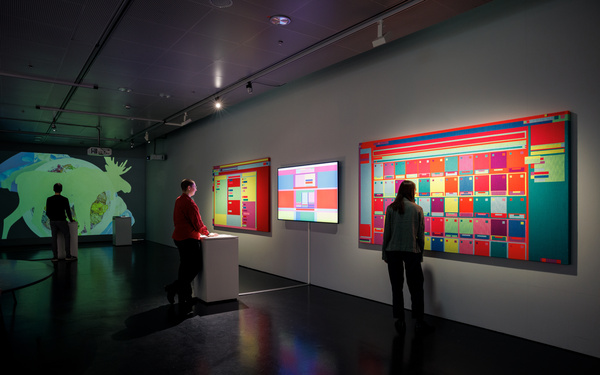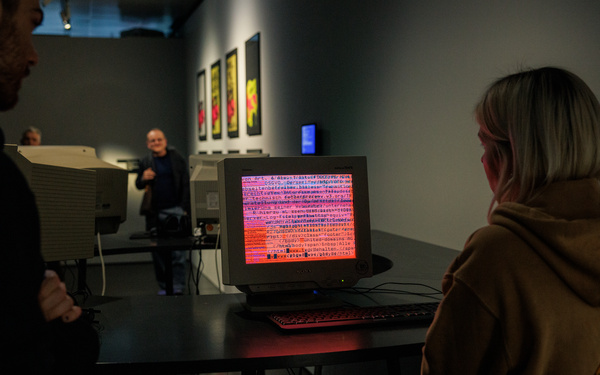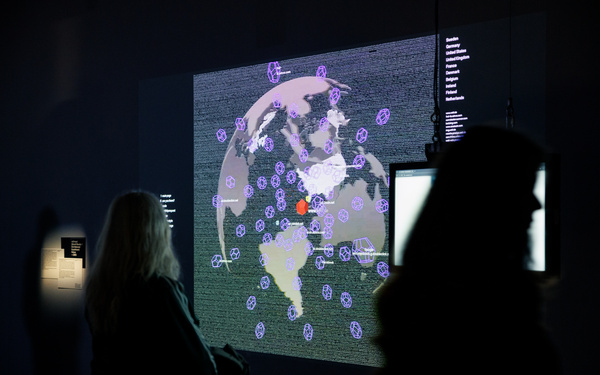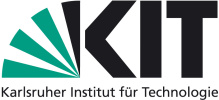- Exhibition
Choose Your Filter!
Browser Art since the Beginnings of the World Wide Web
Sat, February 01 – Sun, August 24, 2025
- Location
- Atrium 1+2, 2nd floor
- Entrance fee
- Museum admission
The exhibition Choose your Filter! Browser Art since the Beginnings of the World Wide Web offers fresh insights into 30 years of the development of alternative browsers. It presents a wide variety of artistic takes on what cyberspace is and what users can do with it.
British physicist and computer scientist Tim Berners-Lee invented the WorldWideWeb in 1989 and when he created the first website in 1991, the web became accessible to the wider public. Accessing the data space of the World Wide Web, which consists of hypertext organized in web pages, was first made possible by the web browser of the same name that Lee developed as of 1989 at CERN (European Organization for Nuclear Research) in Geneva. This laid the foundations for what we now generally refer to as the Internet.
Web browsers are our gateways to the World Wide Web/Internet: they interpret the code of websites, display texts, images, or videos, and make it possible for us to use the Internet in the first place. As such, they shape how we experience this data space and determine the ways in which we interact with the Internet. Initially, they were developed mainly at universities, but from 1995 onwards development flourished through the commercial sector, due to the rapid economic expansion of the Web.
In the early years the appearance and functionality of web browsers were not yet standardized, but nowadays, a small number of popular browsers, such as Chrome and Safari, dominate the market. At the same time, social media platforms are increasingly creating closed browsing experiences, thus supplanting a Web that is open and accessible to all.
As early as 1994, artists began adding to the emerging ecosystem of web browsers by creating their own applications. Artistic — or creative — browsers do not necessarily conform to the general characteristics that commercial portals possess: User-friendliness, efficiency, high transmission rate, and multifunctionality all take a back seat with these more creative alternatives. Such artistic applications have the potential to surprise us by presenting Internet structures in novel ways and questioning the supposed neutrality of this very important software tool. We become aware of just how highly standardized and restrictive commercial browsers are today when we experience these alternative and creative artistic interfaces.
The exhibition demonstrates that the Internet can actually have many different faces, depending on concept, task, technical sophistication, and aesthetic choice. But whichever browser we choose, it brings with it a raft of conceptual filters that determine what we see, how we see it, and above all what we don't see.
Choose Your Filter! is part of a long history of presenting and collecting Internet art at the ZKM, which started with net_condition in 1999, the world's first exhibition dedicated entirely to net art. Numerous historical works have been painstakingly restored for this exhibition by the participating artists and the ZKM team, allowing them to be seen again for the first time in many years. The exhibition is based on two research projects on Internet art and artistic browser applications conducted at the Karlsruhe Institute of Technology (KIT) and is accompanied by scholarly publications.
Imprint
Curators: Inge Hinterwaldner (KIT), Daniela Hönigsberg (KIT), Laura C. Schmidt (ZKM)
Project assistance: Anna Feil, Lan-Chen Liu
Technical project management and scenography: Matthias Gommel
Registrar: Natascha Daher
Media art conservators and technical development: Daniel Heiss, Marc Schütze, Matthieu Vlaminck
Conservators: Leonie Rök
Graphic design: 2xGoldstein
With special thanks to the artists, the lenders, rhizome.org, Katharina Kern, Margit Rosen, Clara Runge, Philipp Ziegler, and the entire team of ZKM not mentioned here by name.
-
In cooperation with
-
Research project funded by
